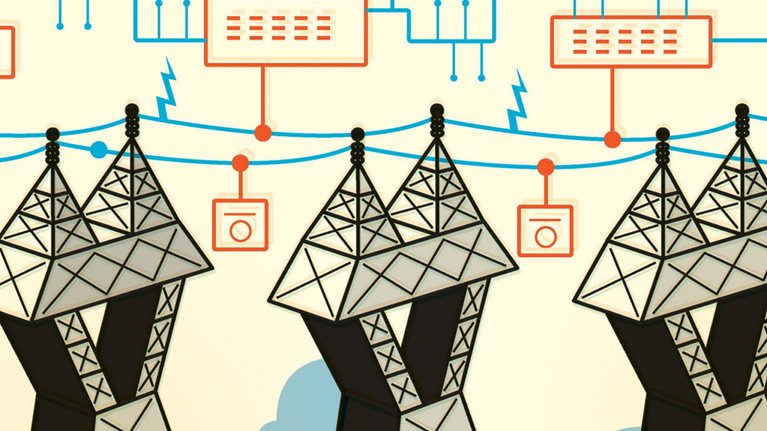Why does the Internet of Things matter? What’s the value of placing sensors in mining equipment to measure product performance and operating conditions? Or giving “smart pills” to cows to monitor their vital signs? In these short videos, the CEO of computer-software company PTC, James Heppelmann, explains how the network of smart, connected technologies that make up the Internet of Things improves how products are created, operated, and serviced. In addition, he has pointed out that these innovations aren’t concentrated in Silicon Valley: they’re happening in the engineering and service departments of manufacturing companies across the United States, China, and Germany. An edited transcript of Heppelmann’s remarks follows.
Interview transcript
Internet of Things
The term Internet of Things doesn’t actually communicate much. It’s a catchy phrase and we all like it, but it’s not clear what it means. But when we say “smart, connected products,” then I think it becomes a little bit more tangible, and people really understand that much of the excitement here isn’t about the Internet—it’s about the things.
If you step back and say, “Why would people connect things to the Internet? What’s the point?”—I think there are three killer applications. The first is that you can service things better if you can communicate with these things and have feedback loops. You can be proactive. You can be efficient. You can maintain higher degrees of uptime. Better output with lesser input.
The second thing you can do is you can operate these things better—operate them remotely for reasons of safety, efficiency, accessibility, you name it. And the third thing is that you can make them better. You can have feedback loops into the engineering and design processes to understand if the customers use the product like you thought they would. How does the design perform in actual use for the customer? So I think that this will have a transformative effect on the way things are created, operated, and serviced. And a tremendous amount of efficiency and differentiation and value will be created as a result.
How it could affect the value chain
I think the idea of smart, connected products will have a dramatic impact on value chains because we’ve always thought of the value chain as being around the product and that the product was just a dumb stone, if you will, moving through some smart value chain. But now, the product’s actually a first-class participant in its own value chain. It’s talking to its creators in engineering and manufacturing. It’s talking to the people who are supposed to service it. It’s talking to its operators. It’s even talking to the sales and marketing department about what the customer is thinking.
The product becomes, for example, a sensor in the relationship with the customer. And this challenges the conventional concept of CRM. The idea of customer-relationship management is that customers will talk to you about their feelings about your product. And now, in this new world, we’re going to have products that are early-warning devices that tell us about what value the customer is getting or not getting. What’s the degree of utilization? What kind of problems are customers having? What are the opportunities for upsell? When are customers going to need a replacement product, a consumable? You name it. The product becomes a sensor in the relationship with your customer. That will change a lot in terms of how things are created, sold, serviced, operated, and so forth.
What you should do
Manufacturing executives are very intimidated by what’s happening. If I were the head of a company that’s been making diesel engines for the past 100 years, my company would know diesel engines. But the definition of what is a diesel engine is now changing quickly. In the past ten years, we had the inclusion of embedded software and electronics. But now, when we step across the line from a smart engine to a smart, connected engine, suddenly there’s an explosion of new technological opportunities and concerns. I’m going to need a device cloud and big data and integration and security and applications on smartphones and tablets—and wow!
Who in our engineering department understands that technology stack? You know, not many. Maybe you turn to your IT department; it’s actually more like what they do. Maybe you’re going to have to get your IT department involved in engineering your next-generation product. My advice would be to try to understand the layers of the technology stack, try to get to the point where you are going to really add value. Putting sensors in your products, collecting data within your products—you can add a lot of value there.
You’ll probably then want to connect that to some type of a cloud solution you probably need to purchase—a device cloud of sorts. You’re probably going to need some big data analytics, and you’re going to need some investments in big data technology. You’re going to need security and integration technology and, again, that probably needs to come from the outside.
But when it comes to the applications that help you to operate and service and create feedback loops, you’re going to want to get involved again because who knows diesel engines and how to operate them better than the company that’s been making diesel engines for 100 years?
Three big risks
I probably would put the biggest risks in three buckets. The first risk is that I do nothing and somebody leapfrogs me. That’s a big problem, and we’ve seen a few examples that have been pretty dramatic.
The second risk is that I do something and it doesn’t work. I overestimated the capabilities of my internal engineering and IT departments. I invested a lot of money, and it didn’t really produce a successful product. It didn’t scale, it didn’t perform, it didn’t work.
And the third risk is the risk of unintended consequences. I built something. I began to collect data. That data got hacked and compromised. We’ve all seen examples—when credit-card numbers get stolen and so forth. The company that gets blamed actually was a victim, but the customers say, “I’m still going to blame you because if you’re going to take that type of information from me, then you have a duty to protect it, and you failed in that duty.”
The mitigation for not doing anything and for being leapfrogged is that you need to move forward with a strategy and a technology investigation and a prototype and then plan what you are going to do. And I’d say if you’re not already doing that, you’re already vulnerable because a lot of companies are deep into that process for sure. On the risk of doing something and it doesn’t work, it’s like any other big, new-product project you’re trying to do. You have to make sure that you actually have the capabilities to do this and that you understand how you’ll create value by doing it.
And on the third item—unintended consequences, particularly around security and availability—I think you need to find some good outside partners. Because, to be frank, most manufacturing companies are not really in a position internally to solve these problems.

